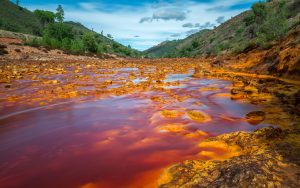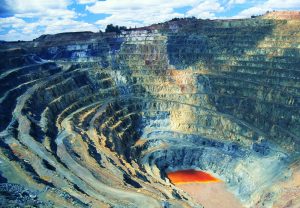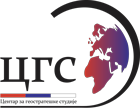Dragana Trifkovic, Director General of the Center for geostrategic studies
Note: read the first part of the text at the following link Dragana Trifkovic: Lithium fever threatens to devastate Serbia – part one) - Center for Geostrategic Research (geostrategy.rs )
- Serbia becomes mine to meet European ambitions in the electric vehicle automotive industry
The advantages of electric cars over the classic are the absence of greenhouse gas emissions, less dependence on fossil fuels, lower noise level, higher engine efficiency, etc. But for the mass application of electric cars it is necessary to solve many obstacles such as the cost and limitation of battery capacity, inefficiency of battery production, lack of chargers for electric vehicles, lack of network of battery charging stations, etc. Lithium is necessary for the production of electronics (approximate distribution in use: 69% of lithium goes on batteries, 15% on the production of ceramics and Glass, 6% on the production of lubricants, 5% on metallurgy, 3% on air conditioning systems, 2% required by medicine and polymers), and in the automotive electric vehicle industry it is necessary for the production of lithium-ion battery. Of the practically applicable technologies for compact and spacious energy storage, lithium cells are currently the most in demand. However, the production of lithium batteries is expensive and the big drawback is that lithium-ion batteries are flammable, so they are already looking for an alternative. For now, electric car manufacturers use lithium and therefore the demand for this ore has sharply increased. To produce one battery for an electric car Tesla Model requires 63 kg of lithium, however, the average is 20 kg per car. It is estimated that there are currently about one and a half billion cars in the world and their number is growing. A rough estimate is that up to 50 million tons of lithium will be used in cars after a full energy transition that may take the next ten or more years. In this regard, based on the data already presented on World reserves, it is clear that there is no significant shortage of lithium that would interfere with the energy transition. For the same car batteries, the lack of nickel and cobalt may be more significant. Currently, the world produces about 100 million cars a year, and if they were all battery-powered, it would take 2 million tons a year. So the main reason why it is necessary to open a lithium mine in Europe, is not the lack of this ore on the world market, but exclusively the ambition of Britain, Germany, France to become independent in the production of electric cars and compete on the world market. These countries no longer have access to Africa's mineral wealth because they have been driven out of there. On the other hand, although Germany, which is building a large factory for the production of lithium-ion batteries, also has the largest reserves of lithium in Europe, it does not intend to open surface mines, because the process of extracting and extracting lithium is extremely harmful to the environment. The same is true for Portugal or Austria. For this reason, European officials say that they have the highest hopes for the "Jadar" project, and it follows that Serbia should be polluted in order for the EU states to meet their green agenda, environmental standards and at the same time meet their leadership ambitions in the automotive industry (Folsfagen, e.g. it has the ambition to become a competitor to Tesla). And here we come to the key point, which is why it is unacceptable for Serbia to become a new African colony of the EU, from which it will receive cheap ores.

PHOTO: Tesla Model electric car
- Belgrade is in danger from the"Jadar" project
Rio Tinto's plan for a ли 2.4 billion lithium mine in Serbia is to position the company, for at least the next 15 years, as the largest supplier of lithium in Europe. The real question is, what does it gain or rather lose? Although the current demand for lithium is high, there is no single method for cost-effective and environmentally-friendly industrial development of lithium deposits. They are very diverse and each case requires its own method of development. There are two main technological directions for the extraction of lithium from bases containing it – hydrominerals and ores.
Extraction from hydrominerals (geothermal sources, salt marsh clays or salt Salar saline solutions) does not harm the environment. It is carried out by using solar energy on the Earth's surface where evaporation (about 18 months) is carried out, then rinsing. Costs are about.2,000 per tonne of lithium carbonate (LCE) with slow process Times and high initial costs. Extraction from ore (from rock ore, i.e. sedimentary carbonate rocks) involves crushing, grinding, treating large amounts of heated sulfuric and hydrochloric acid, rinsing. It is priced at about.4,500 per ton of LCE, with an additional cost of about. 3,000 to convert to higher-quality lithium batteries. This process has a fast processing time and lower running costs, but is drastically dangerous to the environment.
Jadarite is a unique mineral found in the Yadar River Basin in a core of layers of oil shale and pyroclastic sediments of Neogene (early and Middle Miocene), in the form of massive aggregates several meters thick, (not found elsewhere in the world) and containing lithium and boron (chemical forula: sodium lithium boron silicate hydroxide). So the extraction of lithium from jadarite falls under a technological direction that is extremely harmful to the environment.
In Australia, which has one of the largest deposits of lithium in the world, it is mined from spodum, lithium ore, a mineral associated with pyroxenes. Lithium sites in Australia are located at long distances from cities, and are currently only exporting concentrate that is further processed by customers, although projects to transition to lithium hydroxide production are being considered. Last year, the Rio Tinta project in Australia near the town of Dwellingap was halted as the local community rebelled against environmental destruction.[i]. In Argentina, Chile and Bolivia (where about 70 percent of the world's supplies are located), lithium is extracted from saline solutions, a technology that does not harm the environment. In the United States, the lithium deposit is located in the Nevada desert, so although it is not close to the populated area there is resistance in the American community to mining in this area[ii]. За ово налазиште је Елон Маск власник компаније Тесла добио право да самостално експлоатише руду на површини од 10 хиљада хектара глинених наслага богатих литијумом. Шта ове чињенице говоре? Да је копање литијума у богатој природи, у близини река и у близини насељених места изузетно опасно и да ово природно добро може да претвори у девастирано и токсично подручје. У случају пројекта „Јадар“ посебна опасност јесте у томе што би се рудници налазили у близини реке Јадар која се улива у Дрину, па би загађења тиме доспела из Дрине и у Саву и Дунав. То би могло да уништи живи свет низводно од Јадра, а рударске операције Рио Тинта су већ више пута довеле до контаминације извора воде у другим деловима света. Директно би била угрожена 22 села која су обухваћена овим пројектом, док би земљорадња у овом богатом крају била онемогућена у ширем подручју. Међутим, ако узмемо чињеницу да активни рудници (копови) литијума налазе барем 200 км удаљени од насељених места у опасности је и Београд.

The Rio Tinto River in Spain, where the British mined for decades
- In the ten years it takes to complete the energy transition, Serbia may be devastated in the long term
The main damage is not only the mining of ore, but the pollution of air, soil, water, as well as the living world. It has already been said that extraction from jadarite ore involves crushing, grinding, treating large amounts of heated sulfuric and hydrochloric acids, and rinsing. This technology of obtaining lithium from rocks involves the emission of between 10 and 30 tonnes of CO2 per tonne of lithium, which means that the reduction of this gas emissions in the EU will imply an increase in air pollution in Serbia. In addition, the technology requires the use of huge amounts of water, as well as heated sulfuric and hydrochloric acids to process jadarite ore and obtain lithium. Polluted water as well as acids will then flow into the Jadar River, from there into the Drina, Sava and Danube, which will have a devastating impact on the environment. And finally, mining lithium will leave behind large amounts of tailings filled with toxic materials, because the processing of jadarite will also release boron, cadmium, arsenic, nickel and lead. In remote places from the settlements where this method of digging up lithium in the world (deserts, steppes, etc.) remains scorched earth. What consequences this will have for the naturally rich and populated area in western Serbia, it is difficult to describe in words. Despite the fact that behind the Jadar project there is a very powerful transnational corporation that has so far invested a lot of funds for research, but also for the purchase of political, scientific and other establishment and that the project is in the final phase of pre-preparation, there is little chance that it will be stopped. Especially since these "investors" (Soros, Rockefeller Fund, etc.) Also finance activists who lead protests against Rio Tinto, in order to control the dissatisfaction of citizens and its depreciation at a crucial moment (as was the case with the protests against the surrender of Kosovo and Metohija, where the Controlled Opposition and activists played their role: Dveri, Movement for the defense of Kim and others). It is obvious that nothing will come of the announced referendum of citizens, which even if organized would not have a chance to verify the will of the majority of citizens due to the technologies of electoral manipulation. Especially in the interest of Rio Tinto and the Centers of power behind it is the atmosphere of complete indifference and willlessness in Serbia. If we also take the" reputation " of Serbia in the West, the relationship of Brussels, Berlin or Paris who try to humiliate the officials from Serbia on every occasion, showing who is the boss, it is clear that there will be no mercy and generosity. We should not lose sight of the high level of corruption both in Serbia and in the West in general, which suits to do business with corrupt authorities on the basis of mutual interests. Such engagements in recent decades have greatly damaged African countries whose natural resources have been devastated and poverty levels have become even higher. Only Western power centers and corrupt regimes in various countries have found interest in this. It follows that due to the loss of control over African Resources, the Western centers of power take Serbia as an alternative, which becomes a new "African colony" in the center of Europe.

At this point, it is difficult to predict how long Serbian lithium will be exploited. If we consider that the plan is to be by 2035. the year the energy transition ends, we can count on Rio Tinto to orient itself optimally for the next ten years. However, it should be borne in mind that an alternative to lithium-ion batteries, whose biggest drawback is that they are flammable, is already being sought. A group of scientists have developed sodium-ion batteries and there are already commercial samples of such batteries, but they are not yet widely used. It is very possible that the design of existing lithium-ion batteries will also be changed and this will lead to a reduction in the required amount of lithium for the production of one battery. Also in the future, the recycling of lithium-ion batteries will certainly increase, which is now at the level of only 5%, so this will increase the available volumes of lithium. However, for Serbia, it represents a critical period of the next ten to fifteen years if the production of lithium starts, because this will lead to severe environmental damage from which Serbia will not be able to recover for a long time. It will certainly cause an increased outflow of the population from Serbia, all at the expense of the enrichment of Rio Tinto, the political power behind this company and the corrupt establishment in Serbia. If the citizens of Serbia are not able to oppose these dark plans and defend their future, they will probably not have it.
Instructions:
LITHIUM-WHITE GOLD OR ENVIRONMENTAL MISCONCEPTION? (pakt.org.rs)
https://n1info.rs/zeleni-kutak/iskopavanje-litijuma-sta-se-desava-za-zemljom-vodom/
[i] https://balkangreenenergynews.com/rs/rio-tinto-obustavlja-litijumski-projekat-u-australiji-nakon-pobune-lokalne-zajednice/
[ii] https://pcpress.rs/nasa-se-protivi-rudarenju-litijuma-u-putinji-nevade/

